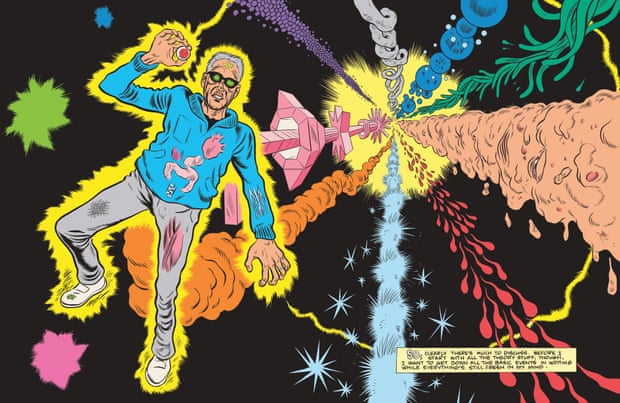The second episode proper begins with yet another of many scenes featuring domestic meal-taking. This time, it’s dinner at the Horne household, where Ben's disturbed, 28-year-old son Johnny, whom Laura used to tutor, is decked out in a full Native American headdress for some reason. As part of the rustic lodge decor, the screen continues to be filled with
First Nations art of the Northwest Coast style, which is an extremely rich and varied network of differing artistic traditions. The works present throughout the series so far do not belong to a single tradition, although I've seen numerous instances of Salish and Haida works, such as is visible on the left side of the screen on the image below.
Uncle Jerry’s "back", even though it's the viewing audience's first time meeting him, and he’s brought brie and baguette sandwiches back from France with him.
Lots and lots of brie and baguette sandwiches. Literally dozens of bags full.
Ben and Jerry (their names allegedly chosen to match that of the ice cream company) both seem to love these sandwiches, as they try to speak with their mouths full of them.
Bringing so many bags filled with a European "delicacy" into a room/lodge filled with Native imagery (built on land stolen from Native Americans) strikes me as a possible satirical statement about the way these altogether ridiculous people live.
Possible Kubrick homage: Ben and Jerry talk about “a new girl, freshly scented from the perfume counter” (like Ronette!) working at One Eyed Jack’s, over the water (and the border) in Canada. According to Ben, Jerry’s got "a 50/50 chance of being first in line". To which Jerry responds: “All work and no play make Ben and Jerry dull boys.”
One Eyed Jacks, of course, is a Marlon Brando film that Stanley Kubrick worked on for months before Brando decided to direct the film himself. Also, Uncle Jerry cuts a peculiarly Kubrickean figure… sort of a cross between Dr. Strangelove, Alex from
Clockwork Orange and Jack from
The Shining (from which the “all work and no play” maxim is taken).
Furthermore, the aforementioned pervasive presence of Native American motifs throughout the Horne properties and elsewhere throughout Twin Peaks is also reminiscent of
The Shining. Unlike Kubrick’s film, however, I don’t believe Lynch intended a sly political commentary. Instead, I think he likes the way the large sculptures of Pacific Northwest Native tribes resemble the iconography of Ancient Egypt and Babylon, such as the Sphinx, or the Winged Bull.
It occurs to me at this point, considering the series' sheer volume of visual references to Native American culture, art, and thus, inescapably, myths and legends, that I should definitely do more research in this direction. I can already think of a few good places to begin. The first book of Peter Levenda's
Sinister Forces trilogy, for instance, devotes a great many pages to some of the darker practices of our haunted continent's Pre-Columbian, First Nations cultures.
Keep watching this space for more details. Now, let's get back to Episode 2... and to One Eyed Jack's.


















































